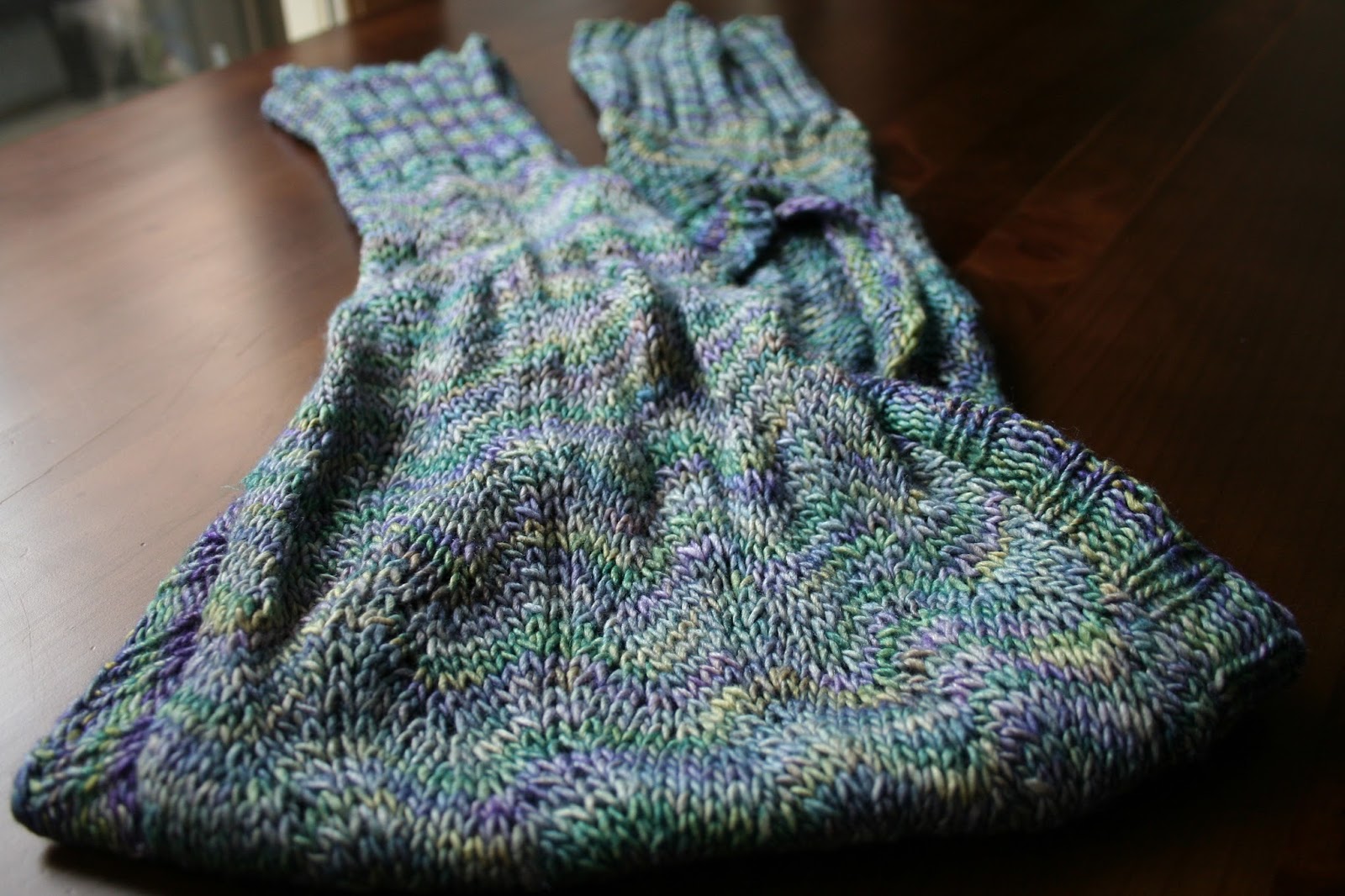When I embarked on this project, I initially took one skein of handspun from my stash for the weft. Then I thought that might be a little too boring for my sister-in-law, who works as a top level landscape architect at a swanky firm in Philly and is also an amazing abstract painter, so I rummaged through my handspun stash for a bigger variety of weft yarns to sift through as I wove. She would love it anyway, but I wanted to really give her a statement scarf. I think I nailed it!
Here's how I started the scarf with my Kromski Harp loom:
I'm getting the hang of making a slightly looser weave. I kind of messed up a little on a previous project (I'll talk about that later), but this scarf turned out perfectly flexible and soft.
Sometimes, I have a hard time realizing what I'm reading and turning it into the setup when it comes to weaving. I used to be unable to wrap my head around the description for making a heel for knitted socks. After reading several posts about how to make string heddles, I finally put the things I had been reading into context when I was sitting there at my warped loom and making all kinds of weird loops with my waste yarn. I give you, my version of a string heddle! You loop every other yarn with the waste yarn, put it on a heddle stick (or anything you have lying around, like I did), then to secure the strings, I made a simple crochet chain along the top:
I wasn't sure how I was going to deal with weaving in all of the ends I would be making with this project. While I was weaving, I just always added in a new yarn from the right side so the tails all hung out on the right side. I made sure to leave enough of a tail so I could weave the tail in all the way to the opposite edge. I was worried about having so many short tails to weave in and what that might do the finished project--I didn't want it to be lopsided!
As far as weaving in the ends goes, I just wrapped the end over the last warp yarn and ran it back through the weaving, wrapping the tail yarn around the woven yarn. It gave it a plied look. I secured the tail through the last warp yarn on the opposite side of the weaving by pulling the tail yarn through the middle of the warp yarn (the tail yarn bisects the warp yarn perpendicularly). I hope that makes sense! I didn't get a shot of this securing method because I was trying to finish the project and take it off the loom before I headed to America.
In the picture above and below, you should be able to see a few lines where the yarn looks extra puffy. That is where I doubled the yarn back on itself to weave in the tail. The thin yarns blended in more smoothly, but I needed to do something different for the thicker yarns. For the thick yarns, I untwisted the fiber, drafted the fiber thinner, retwisted it, then wove the thinner yarn back through the thicker yarn, burying it inside the weft yarn. I may need to do a video on this since it's difficult to explain clearly. For the plied yarn, I pulled each ply apart and wove them in like I did for the bulky singles. When I got all of the yarns woven into the scarf, I kept the ends long. I washed the scarf, dried it, then reshaped it and rolled it flat with a rolling pin. Once it was completely dry, I snipped all of the tails close to the fabric. This step allows me to only cut the ends once, not twice. There are a lot of woven in bits!
I finished the fringe with knots at the top, and kept the length on the long side--about six inches. The scarf was around 72 inches, 6 feet, and the fringe bumped that up to a total length of about seven feet. Needless to say, you could wrap this around two times and still have plenty of length left over to tuck and twist and wrap and fold however you wish. It's glamorous for LA style, yet warm enough for chilly Philly. My sister-in-law travels a lot, so this versatile scarf will always be rolling in her carry-on!
I hope your holiday projects went well, and as always, feel free to share your works of art over on Facebook!





























